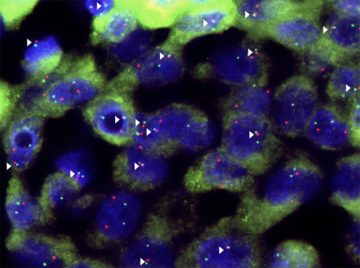Kristina Campbell in Nature:
 When someone’s liver is infected with hepatitis B, damage increases over time, as long as the virus is active. The liver tissue thickens and forms scars (fibrosis), advancing to severe scarring called cirrhosis. In approximately one-third of people with hepatitis B infection, this then progresses to hepatocellular carcinoma, as the viral DNA inserts itself into liver cells, changing their function and allowing tumours to grow.
When someone’s liver is infected with hepatitis B, damage increases over time, as long as the virus is active. The liver tissue thickens and forms scars (fibrosis), advancing to severe scarring called cirrhosis. In approximately one-third of people with hepatitis B infection, this then progresses to hepatocellular carcinoma, as the viral DNA inserts itself into liver cells, changing their function and allowing tumours to grow.
Researchers and medical professionals cannot yet predict with certainty which people with hepatitis B infection will develop liver cancer. They know it happens more frequently in men, in people infected with certain genetic variants of the virus, in heavy consumers of alcohol, and in those who have been exposed to chemicals called aflatoxins, which can contaminate foods, including peanuts. People with various metabolic disorders are also at higher risk, and studies have identified human genes associated with this viral-led progression to cancer1. However, these risk factors fail to identify everyone who will get hepatocellular carcinoma. People with hepatitis B infection and liver damage should ideally be monitored regularly for evidence of tumours, because survival rates increase if the cancer is caught early.
More here.
